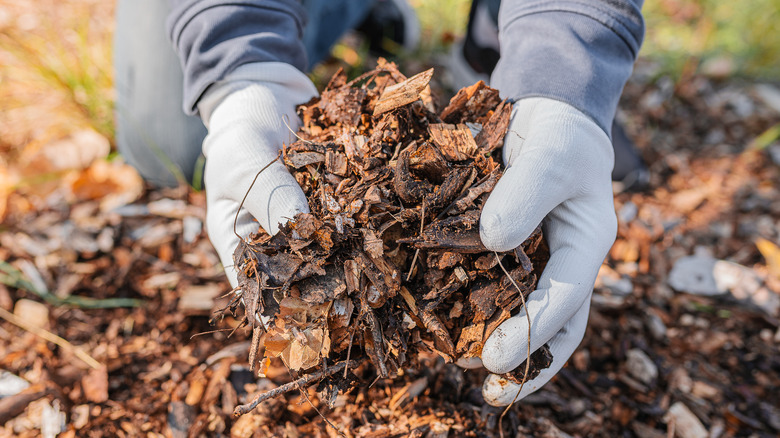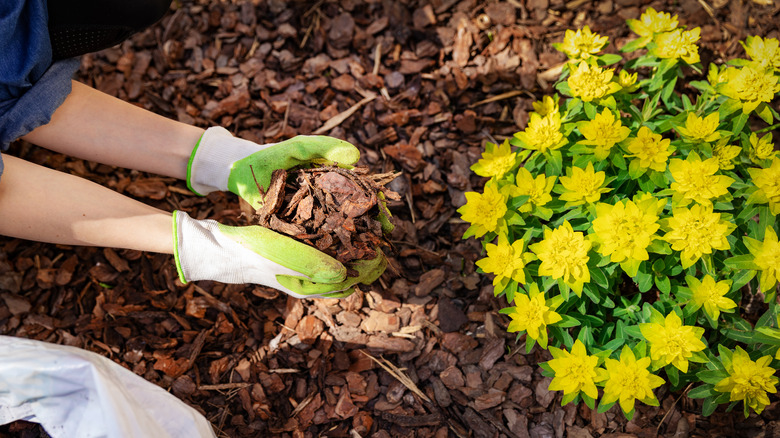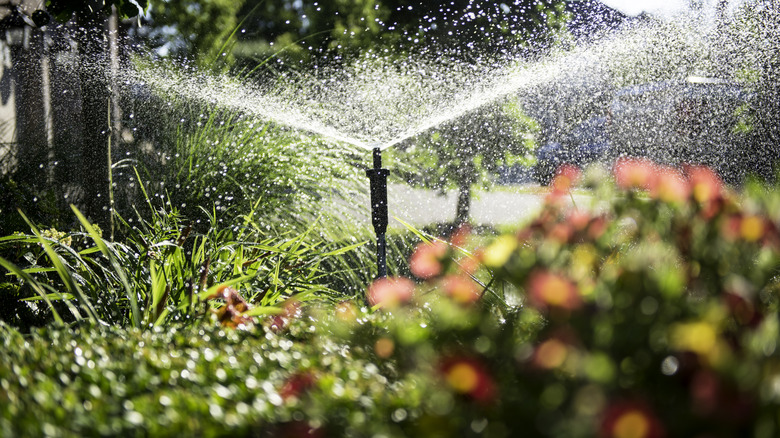The Pros And Cons Of Using Wood Bark As A Mulch Alternative In The Garden
Mulching is often put on the back burner in favor of more immediate concerns. Like so many other chores, mulching gets neglected when needs that crop up right in front of us take precedence. Also, like other chores, many problems can be prevented with the proper planning. Mulching is one of those tasks that might feel annoying and unproductive, but it can ultimately save you time, money, and trouble.
There are so many types of mulches: paper, compost, rocks, wood bark, and even plastic sheeting. Wood bark mulch is a top choice in certain situations, but it can be a wasteful or even harmful option in others. The truth about mulch comes down to what you're growing, where you're growing it, and the climate in your area. If you ignore the warnings about wood bark mulch, it can turn your proactive job into a waste of time. Read on to discover when it's great to mulch with wood bark and when you should give it a miss.
Why use wood bark mulch?
With sky-high water bills and widespread droughts becoming more common during the summer, moisture retention is one of the top reasons to mulch, especially if you live in a dry region. Researchers at Colorado State University found that using wood bark mulch around perennials and shrubs reduced the plants' water needs by up to 50%. Applying wood bark mulch to moist soil reduces evaporation and can prevent erosion. You may see benefits by using this type of mulch particularly on trees and shrubs, perennials, and small fruit plants.
Other pluses for using wood bark mulch are keeping weeds at bay, boosting soil health and texture, and insulating plants from extreme temperatures. You may have heard that this type of mulch can reduce essential nitrogen in soils that plants depend on, but this is entirely untrue. Wood bark mulch can also lend a finished look to your garden that adds curb appeal to your space. If you avoid common mulching mistakes in your garden, wood bark mulch can save you money, work, and worry.
What are the downsides of wood bark mulch?
In order to reap the benefits of mulching with wood bark, you've got to use it at the right time of year. The main factors that can turn the pros of bark mulch into cons are your plants' location and how you're using the mulch. Don't mix wood bark mulch into the soil. Using it as a top layer to protect plants and soil has benefits, but if it's mixed into the soil, it may have adverse effects. When wood bark becomes part of a soil mixture, this is where nitrogen deficiencies can occur. The soil microbes that also depend on nitrogen feast on the wood pieces to break it down. In the process, these microscopic helpers overdo their job — extra food makes for population booms in microbes, creating more creatures to hog more nitrogen from plants. The wood can also bring in funguses and diseases if it's tilled into the soil.
As well, wood bark can be harmful if applied too closely to plants. Leave space between trunks and stems and the edge of your mulch to prevent diseases from coming into contact with plant tissue. Lastly, wood bark mulch can keep your plants from getting enough water as much as it can help with hydration. In high heat and intense sunlight, this mulch can repel moisture instead of retain it. Experts suggest using it in more shaded areas and by running irrigation between the layer of mulch and soil.


